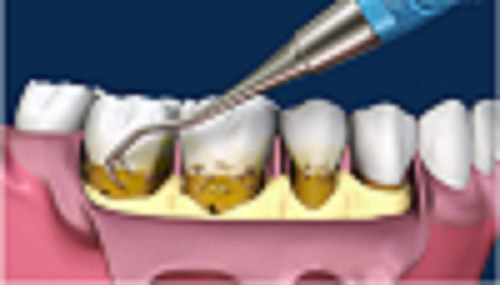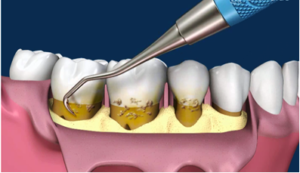What is Laser Dentistry Deep Cleaning?
Many people might not know it but periodontal disease is a common condition. In fact, according to the Centers for Disease Control and Prevention, almost 50 percent of Americans aged 30 years and above have periodontal disease. Early gum disease can be reversed with routine cleanings and good oral hygiene, but periodontal disease is a lifelong condition.
If you experience bleeding, sore, swollen, and receding gums, as well as loose teeth and persistent bad breath, you might need gum disease treatment. Your dentist may recommend scaling and root planing, but newer procedures are growing in popularity today. Read on as we learn more about how dental lasers are now used today for periodontal treatment.
Causes and Cures of Gum Disease
Gum disease is usually caused by poor oral hygiene, which is why the best kind of prevention is to brush twice daily and floss at least once daily. It is also essential that you visit your dentist every six months for routine cleaning and check-up. Brushing and flossing might remove plaque, but only a dentist can remove tartar. They can also reach and remove plaque and tartar in between teeth and along the gum line, helping avoid gum disease and cavities.
The first stage of gum disease is gingivitis. If this and its other signs are ignored, and you continue to neglect your oral health, gingivitis can progress into periodontitis. At this stage, the disease is already irreversible and can lead to receding gums and even loss of teeth. The procedures of scaling and root planing can slow down the progression of gum disease, allowing you to still have good oral health.
Gum Disease and Laser Treatment
Today, more and more dentists are using laser therapy to remove plaque and tartar from their patients. It is relatively easy to maintain the results of this laser treatment, which includes regular checkups and the use of simple treatments. Using laser in treating gum disease involves the following steps:
- Determining the extent of the infection by pre-testing the bacteria
- Using the laser treatment to decontaminate deep pockets
- Performing the treatment with the aid of a microscope
- Executing post-treatment to validate the results
Uses of Laser Deep Cleaning Treatment
- Tooth decay. Laser deep cleaning treatment can remove decay from the tooth and prepare the enamel for filling. A laser is also used to cure the filling.
- Periodontal disease. Laser deep cleaning treatment can reshape the gums and get rid of bacteria during root canal therapy.
- Lesion or biopsy removal. Laser deep cleaning treatment can remove tissue that can be examined for cancer.
- Teeth whitening. Laser deep cleaning treatment can speed up in-office whitening treatments.
Benefits of Laser Deep Cleaning Treatment
The use of lasers is now the leasing-edge treatment in fighting periodontal disease. Lasers give a revolutionary painless option for killing harmful oral bacteria. They also allow you to preserve lost teeth using standard periodontal disease treatment procedures. Here are the benefits of using lasers for treating gum disease.
- Eliminates gum bleeding
- Seals deep periodontal pockets
- Regenerates ligament and bone tissue
- Reduces loose teeth
- Enhanced success rate
- Eliminates discomforts caused by surgery
- Gives an easy solution in case of setbacks
The American Dental Association is very optimistic about the role and possible future of laser technology in dentistry. It is good that we are seeing progress when it comes to creating innovations that will make treatments easier, more comfortable, convenient, and affordable. Perhaps in the near future, we can expect all dentists to use lasers for all their dental procedures.






 |
|